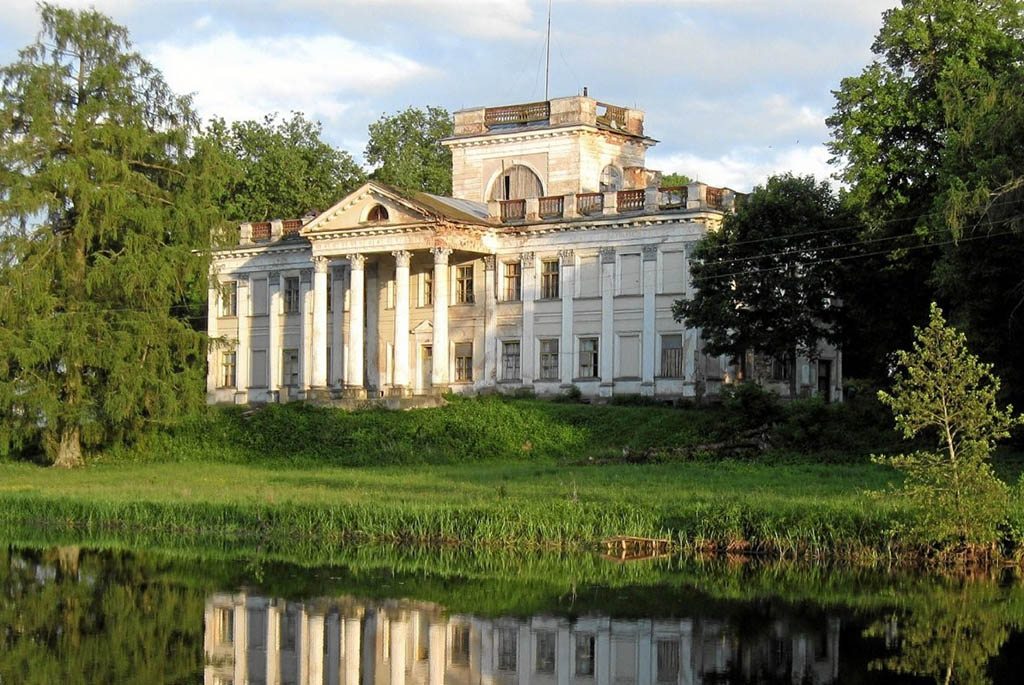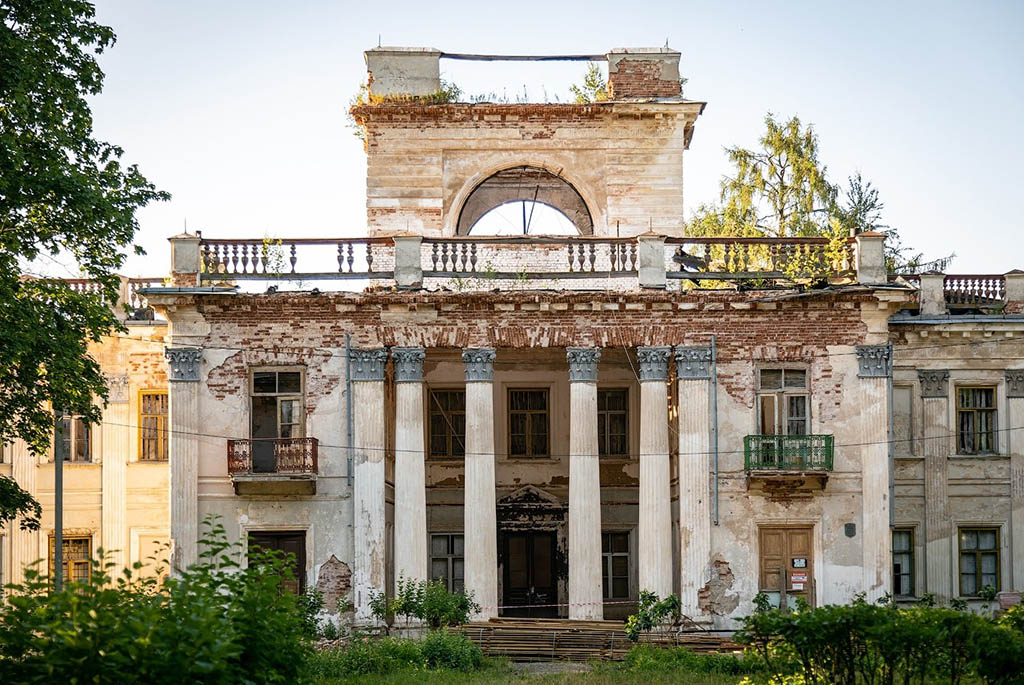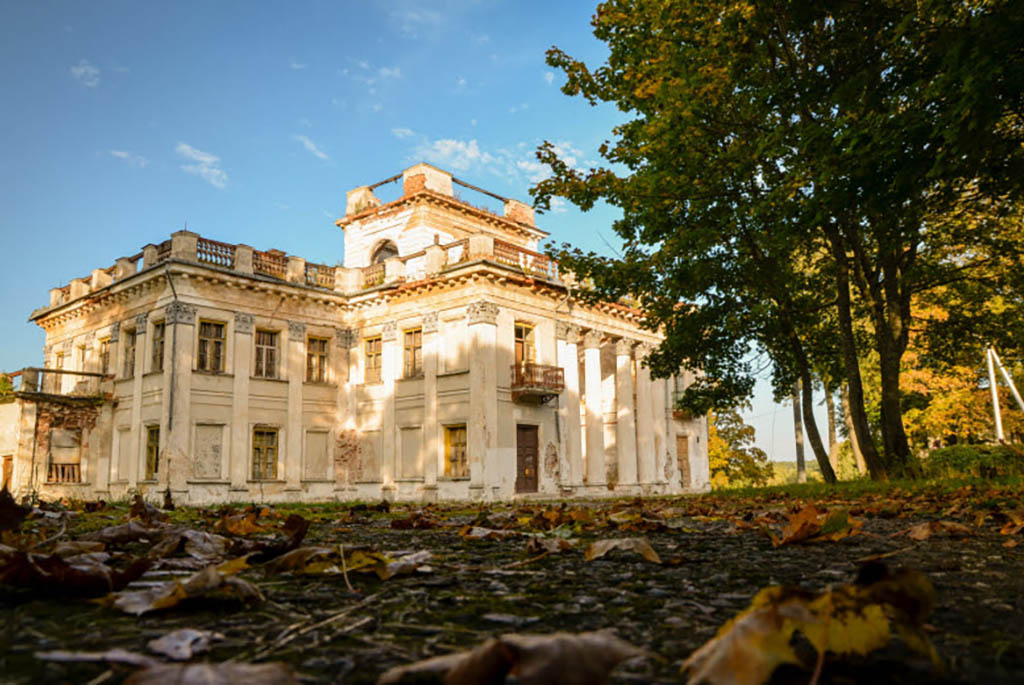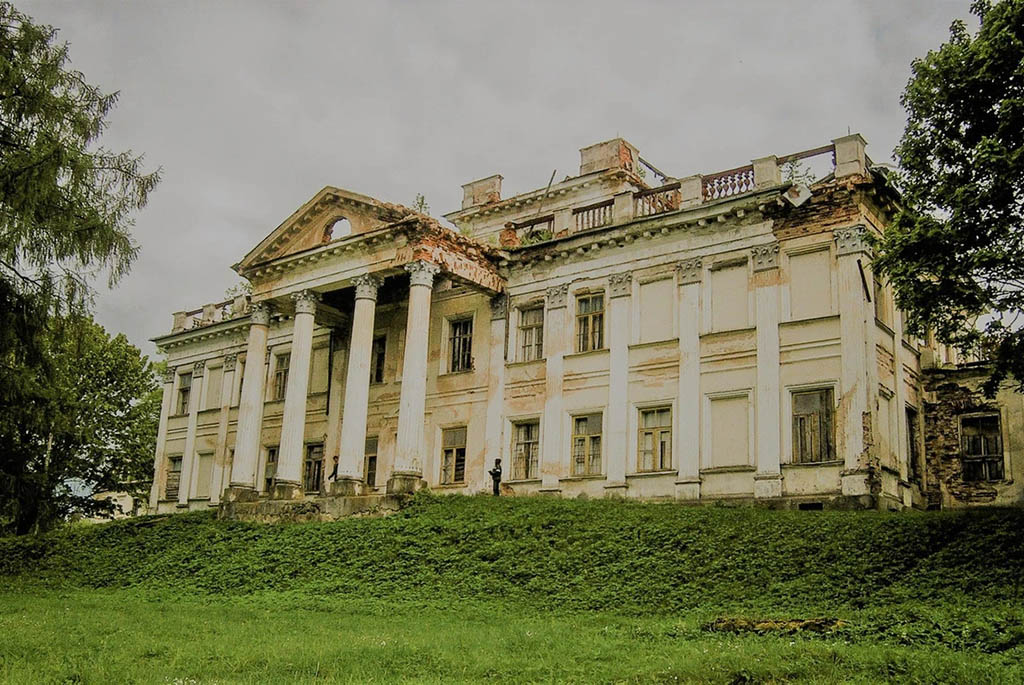It is believed that the village got its name from the noble Zhemlov family, who owned the settlement in the 17th century. Over time, Zhemyslavl changed hands among various nobles. At the beginning of the 19th century, the Polish magnate Jakub Umestovsky became the owner of Zhemyslavl and initiated the construction of a manor complex on the banks of the Gavya river. The process took many years, and after Jakub's death, the construction of the manor was continued by his sons Ludwig and Kazimir, and later by Kazimir's wife, Yuzefa. Construction works were only completed in 1877, under Jakub Umestovsky's grandson, Vladislav.
In the 1820s, Kazimir Umestovsky equipped a greenhouse in the manor, built stone outbuildings, a stable, and a two-story icehouse – a place for storing perishable food. After Kazimir's death, his wife decided to rebuild the manor and erect a stone palace in place of the wooden house. The owners of Zhemyslavl wanted the new building to resemble the royal palace in Warsaw - Lazienki. History has not preserved the name of the architect, but there is a theory that it was Leonard Marconi. Whoever the author of the project was, they managed to bring the Umestovsky's vision to life. A two-story neoclassical-style building was erected over the Gavya, with a rooftop terrace surrounded by a decorative railing. The main facade featured a belvedere with a rusticated parapet, not typical of Belarusian architecture. The building indeed externally resembled the Lazienki Palace. The interior layout also mirrored the plan of the Polish royal residence.
The interiors of the Umestovsky Palace, though not as grand as the royal ones, were nonetheless marked by luxury and elegance: parquet floors laid out with ornament, frescoes on the walls, carved oak panels, fireplaces, and marble stoves, handcrafted furniture, sculptures imported from Europe. The manor grounds also housed a distillery and a cheese factory, and the servants were accommodated in the palace's basement and in separate outbuildings.
Kazimir Umestovsky and his wife were well-educated people who traveled extensively. From their trips abroad, they brought the idea of creating an English landscape park around the palace. Fruit gardens were planted in the manor, as well as chestnut and lime alleys; an artificial pond with an arched bridge and a boat dock was organized. Later, the manor and park complex was inherited by Kazimir's son, Vladislav.
The Fate of the Umestovsky Manor in the 20th Century
At the beginning of the 20th century, Vladislav Umestovsky passed away, leaving the estate to his wife, Yanina. During World War I, the manor housed a German sanatorium. The Germans took away the main valuables from the palace, so after the war ended, Yanina decided to donate the estate to Vilna University. During the Soviet era, the palace belonged to a local collective farm (sovkhoz). After the collective farm closed, the manor began to decay.
Despite the fact that a large part of the buildings remained well preserved, the Umestovsky Manor is now in a state of emergency. A fire caused a significant part of the roof and floors to collapse. In 2017, a Belarusian entrepreneur bought the estate, cleaned up the manor grounds, and restored the icehouse. The owner plans to open a tourist complex in the future, but the restoration work is progressing extremely slowly.
As of today, the Zhemyslavl estate includes:
- The manor house, where remnants of the interior can be seen: mosaic floors, fragments of ceiling decor, remnants of oak wall panels, and marble stoves.
- The icehouse – after restoration, it has been converted into an office building.
- A barn.
- The distillery building.
To see how the "Belarusian Lazienki " are being restored, drive to Zhemyslavl along the M6 highway to Ivya, then turn onto the H6007 road. From Minsk, you can also get there by buses and minibuses, with transfers in Lida or Iwye.





